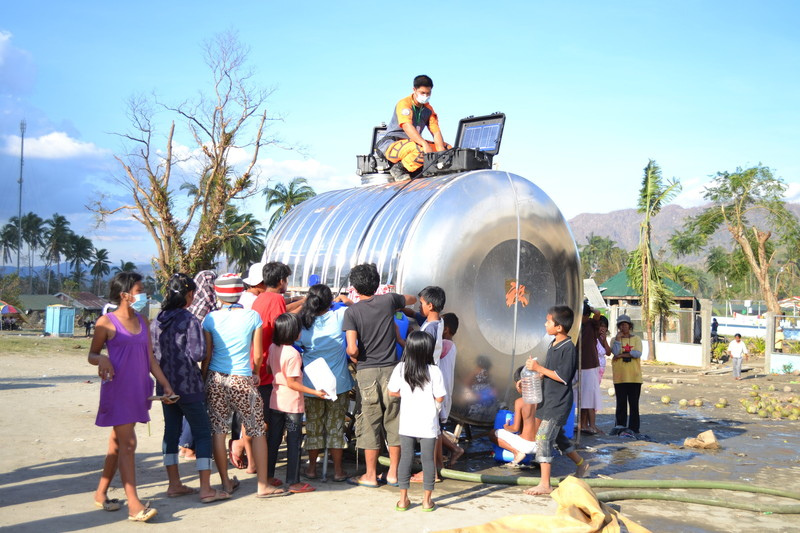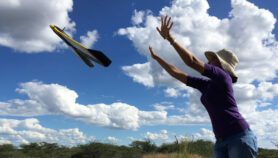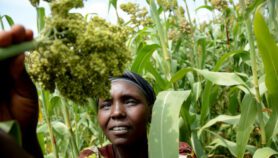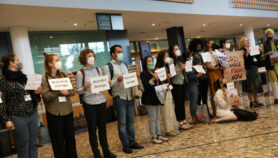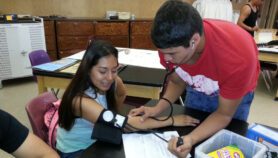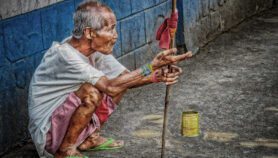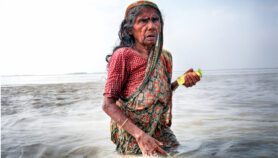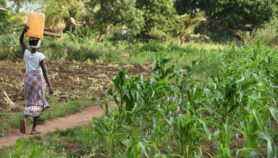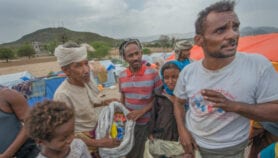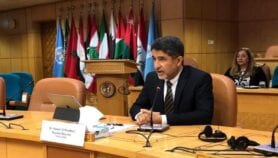By: Richa Malhotra
Send to a friend
The details you provide on this page will not be used to send unsolicited email, and will not be sold to a 3rd party. See privacy policy.
A piece of software developed by a Canadian non-profit organisation is helping humanitarian aid agencies to improve the logistics of aid distribution in disaster-affected countries.
World Vision Canada has developed ‘Last Mile Mobile Solutions’ (LMMS), a mobile and desktop software package which automates and speeds up the emergency relief activities that distribute aid to people affected by natural disasters or disease outbreaks.
Oxfam, Medair and the Norwegian Refugee Council are among the agencies to have already used the software and there are plans by World Vision to use it in the aftermath of Typhoon Haiyan in the Philippines, too.
With a new android version of the software released last month to make the process even quicker, and a recent grant for the LMMS of US$900,000 from Canada’s Department of Foreign Affairs, Trade and Development, more aid workers are set to benefit from the switch to digital.
Conventional aid delivery involves agencies manually inputting rations and supplies into paper files while working on the ground in disaster-hit areas. LMMS automates this, making aid agencies more efficient and accountable.
“We use mobile technologies to register [affected people] and issue barcode identity cards — which our system is capable of generating — to these individuals and then use those identity cards to link them to certain services we deliver in the field,” says Jay Narhan, team leader for applied technology and product development at World Vision International.
Relief services typically include distributing aid such as food, mosquito nets, tents, and physical or electronic cash. Narhan says that LMMS helps to check that the same person does not receive services twice — a common problem with paper-based systems that rely on fingerprints for identification.
“We use mobile technologies to register [affected people] and issue barcode identity cards — which our system is capable of generating — to these individuals and then use those identity cards to link them to certain services we deliver in the field.”
Jay Narhan, World Vision International
Since the original software was developed in 2008, it has been deployed in 16 countries in Africa, Asia and Latin America. It helped to register more than 100,000 affected people and distribute aid to more than 30,000 households following the 2010 earthquake in Haiti.
Aid agency workers at Oxfam and Medair, among other agencies, are being trained to use the LMMS in the field. The team at World Vision configures the LMMS software on laptops and mobile phones and supplies these along with printers, cards and consumables for deployment in emergency situations. The funding comes from international donor agencies and private donations collected online.
A laptop acts as a local server and mobile phones can connect to it wirelessly without an Internet or a mobile phone connection allowing easier data collection. The phones are robust, commercial-grade devices with a longer battery life than regular consumer devices, says Narhan.
He tells SciDev.Net that LMMS has “helped streamline [work] and remove a tonne of administrative work for field workers”.
“If you could see the inefficiencies that are associated with the way we have done things in a paper-based system, you’d be shocked.”
The LMMS application can be run on Windows or Linux operating systems, and last month the team launched an Android version of its mobile component.
“The Android platform allows for faster data processing to do things like registration quickly,” says Narhan.
Part of the US$900,000 grants awarded in August was spent on developing the Android software, and the remainder on training and support for agencies introducing LMMS into the field.
The LMMS team is now planning to develop centralised servers for a particular country or agency to collect all the aid-related information in a single database.
Patrick Meier, director of social innovation at the Qatar Foundation’s Computing Research Institute, says LMMS is not the first system of its kind but this and similar solutions “are important because access to information during disasters is equally important as access to food, water, shelter and medication”.
“There is nothing dignified about having to stand in line to get registered before getting any relief item. So, I really appreciate the sense [behind LMMS] to design a technology that can restore or improve dignity for disaster-affected populations.”
See below for a video on LMMS by World Vision Canada:


